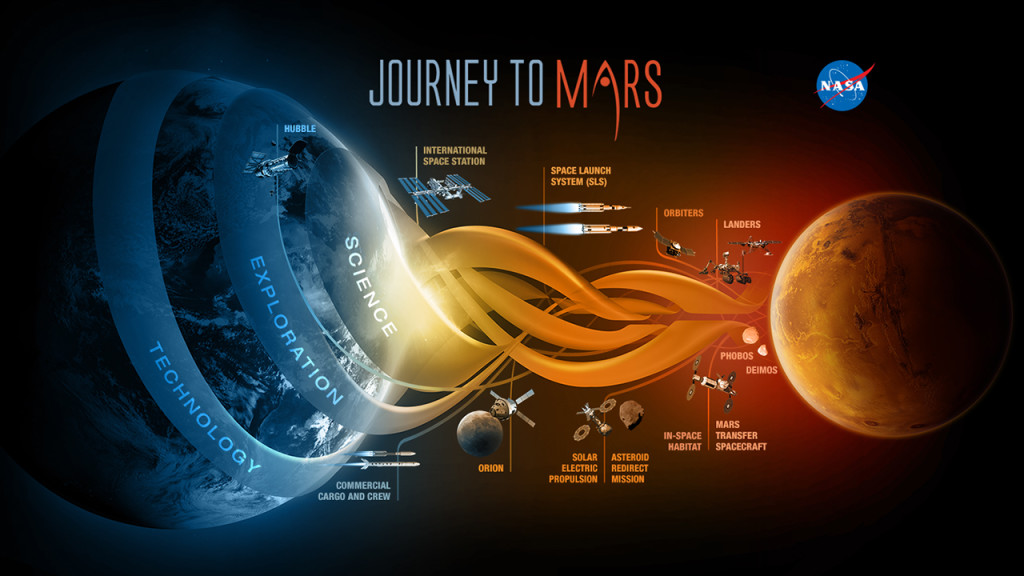Recently, we have talked about some elements of NASA’s Journey to Mars. Do you ever wonder how they fit together? And why we want to go there in the first place?
There are three phases to this journey:
The first phase, Earth Reliant, focuses on research being conducted on the International Space Station (ISS). This includes research in the area of human health, and our previous article on bone marrow investigation in the ISS microgravity environment is an important part in preparing for the journey.
The second phase is known as the Proving Ground. During this time, complex operations will be made primarily in cislunar space. As part of this phase, the Asteroid Redirect Robotic Mission will involve redirecting an asteroid into a stable orbit around the moon. Astronauts will explore the asteroid and return samples to Earth. The Space Launch System (SLS) and Orion crew capsule will have their first integrated test during this phase. Check out our previous blogs on SLS and Orion to learn about their continuing progress and testing.
The third phase, or Earth Independent, will send human missions to the moons of Mars and eventually to the Martian surface. This achievement will be made possible by the steps we continue to take today.
While living in habitats that support life, humans will be able to make advancements in science and technology. This third phase of Journey to Mars could enable humans to answer the exciting question – is there life beyond Earth? The Martian planet had a very similar evolution to that of Earth’s. Exploring Mars will also help us learn more about the history and possible future of Earth.


